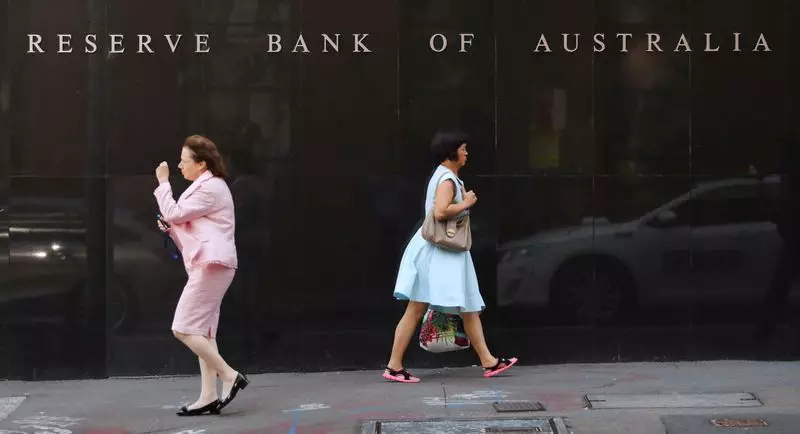The Reserve Bank of Australia (RBA) opted to maintain the cash interest rate at 4.35% during its latest meeting, a decision that has sparked considerable debate among economists and market analysts. By holding rates steady, the RBA reflects a careful approach to monetary policy, especially amid tepid economic indicators and fluctuating inflation rates. This decision was greeted with a notable response in the financial markets; the Australian dollar dipped by 0.8%, settling at $0.6380, while bond futures percolated higher, indicating growing investor confidence in a more favorable economic outlook.
The RBA’s latest statement marks a shift away from its previously hawkish stance, with language suggesting a degree of optimism regarding inflation trends. While Governor Michele Bullock has reiterated concerns over persistent inflation, the assertion that the board is gaining “some confidence” in a return to targeted levels brings a glimmer of hope. Market speculation has intensified concerning potential interest rate cuts in early 2024, particularly in February, which might signify a dramatic policy shift if substantiated by forthcoming economic data.
Delving into the inflation metrics, recent data indicate a deceleration of headline inflation to 2.8% in the third quarter, a figure that aligns back within the RBA’s desired target range. However, this decline can be largely attributed to temporary government interventions, notably rebates on electricity bills, rather than a fundamental improvement in the economic landscape. Alarmingly, core inflation remains stubbornly high at 3.5%, a situation that the RBA has expressed dissatisfaction with, underscoring the complexities of managing inflationary pressures amidst a rapidly shifting macroeconomic environment.
Investors are now pondering the implications of the RBA’s softened rhetoric. While some market analysts, such as Sean Callow of ITC Markets, view the removal of the phrase indicating that nothing was “off the table” as a welcome development, caution is still necessary. These signals convey the RBA’s responsive stance to economic conditions, yet the inadequate core inflation figures serve as a reminder of the challenges ahead. The potential for a rate cut in February now hinges on the performance of upcoming economic releases, which will gauge the true health of consumer spending and overall economic momentum.
The broader economic picture is concerning, especially as Australia grapples with an unexpected slowdown in growth during the third quarter. A report from the National Australia Bank indicated that business conditions had dipped to their lowest levels since late 2020, a worrying trend that contradicts prior expectations of a buoyant recovery driven by consumer spending. Data suggests that consumers are largely conserving their financial resources, opting to save rather than spend, which further complicates prospects for domestic economic growth.
Amid these struggles, there is a small glimmer of positivity within the labor market as the unemployment rate remains stable at 4.1%. However, wage growth has not kept pace, raising questions about the sustainability of consumer spending in the months to come. Economic confidence appears shaky, and the perception that consumers are prioritizing debt repayment over new expenditures could lead to prolonged stagnation in the retail sector.
The RBA’s decision to maintain current interest rates is grounded in a combination of caution and emerging optimism about inflation trends. While there is speculation surrounding potential cuts in early 2024, these shifts are contingent on the evolution of economic performance metrics. As Tony Sycamore of IG aptly notes, the current dovish pivot by the RBA does not signal a complete policy overhaul but suggests a preparedness to react to economic developments.
As investors and policymakers alike navigate this complex landscape, the RBA’s next steps will be crucial in shaping Australia’s economic trajectory. Clarity will come from forthcoming data releases, and maintaining a careful watch on inflation and consumer behavior will be paramount for the RBA as it attempts to balance the conflicting forces of growth and price stability.

